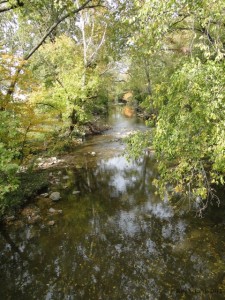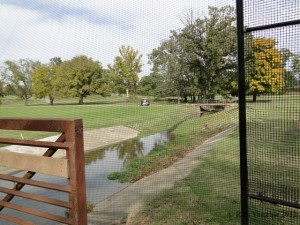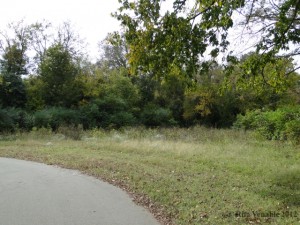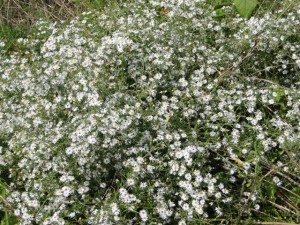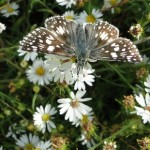This is a story about an October walk along Richland Creek, some old field asters that grow there, and the butterflies that fly there.
Richland Creek is a spring-fed perennial creek that flows through west Nashville or, more correctly, west Nashville has been built around Richland Creek which was here long before the city was. Roads, golf courses, homes, businesses, and parks have been built around this tributary of the Cumberland River. The water in my house comes from the Cumberland River.
Before the bottomlands surrounding Richland Creek became so “cityfied,” deer and buffalo came to the salt licks to obtain nutrients and minerals. This wild game, in turn, lured American Indian hunters. In 1779, James Robertson, founder of the city of Nashville, and his wife, Charlotte, built a log home along the bottomlands of Richland Creek because it was such a “rich land.”
This fall, I was leg-stretching and leaf-peeping on Richland Creek Greenway in the Sylvan Park neighborhood. This particular stretch of greenway is juxtaposed to McCabe Golf Course on one side and a strip of land along Richland Creek, a riparian zone, on the other. On the other side of the creek were homes and yards. It was a warm, sunny day so golf carts were humming around the cart paths while walkers, runners, and parents with strollers were enjoying the greenway.
As I strolled, I found a small area between the greenway and the banks of Richland Creek where old field aster (Symphyotrichum pilosum, formerly Aster pilosus) was still blooming. This old-timey, sturdy, field and roadside shrub blooms in bushy profusion with 1-inch white flowers that butterflies and other insects enjoy through November in most years.
Nectaring on this old field aster were butterflies which are all classified as “generalists” meaning that they adapt to a wide range of circumstances and are very mobile, i.e., not married to a specific habitat. There were Cabbage Whites, Gray Hairstreaks, Eastern Tailed-Blues, Variegated Fritillaries, Pearl Crescents, Monarchs, Common Checkered-Skippers, and Sachems. All of these butterfly species are closely linked to disturbed sites.
So these colorful butterflies drank from the old field aster blooms along a creek which is still beautiful even after so many disturbances—a major flood, construction projects, low flow, and pollution. Scientists in the Urban Ecosyst (2007 10:321-337) say that when urbanization increases, the number of butterfly species decreases. Still, I was grateful to see them—the creek, the old field asters, and the butterflies on a sunny fall day.
Many thanks to Executive Director Monette Rebecca of the Richland Creek Watershed Allianceand and Chief Historian Ward Weems of Tennessee State Parks for their editorial assistance.
©Rita Venable 2012
